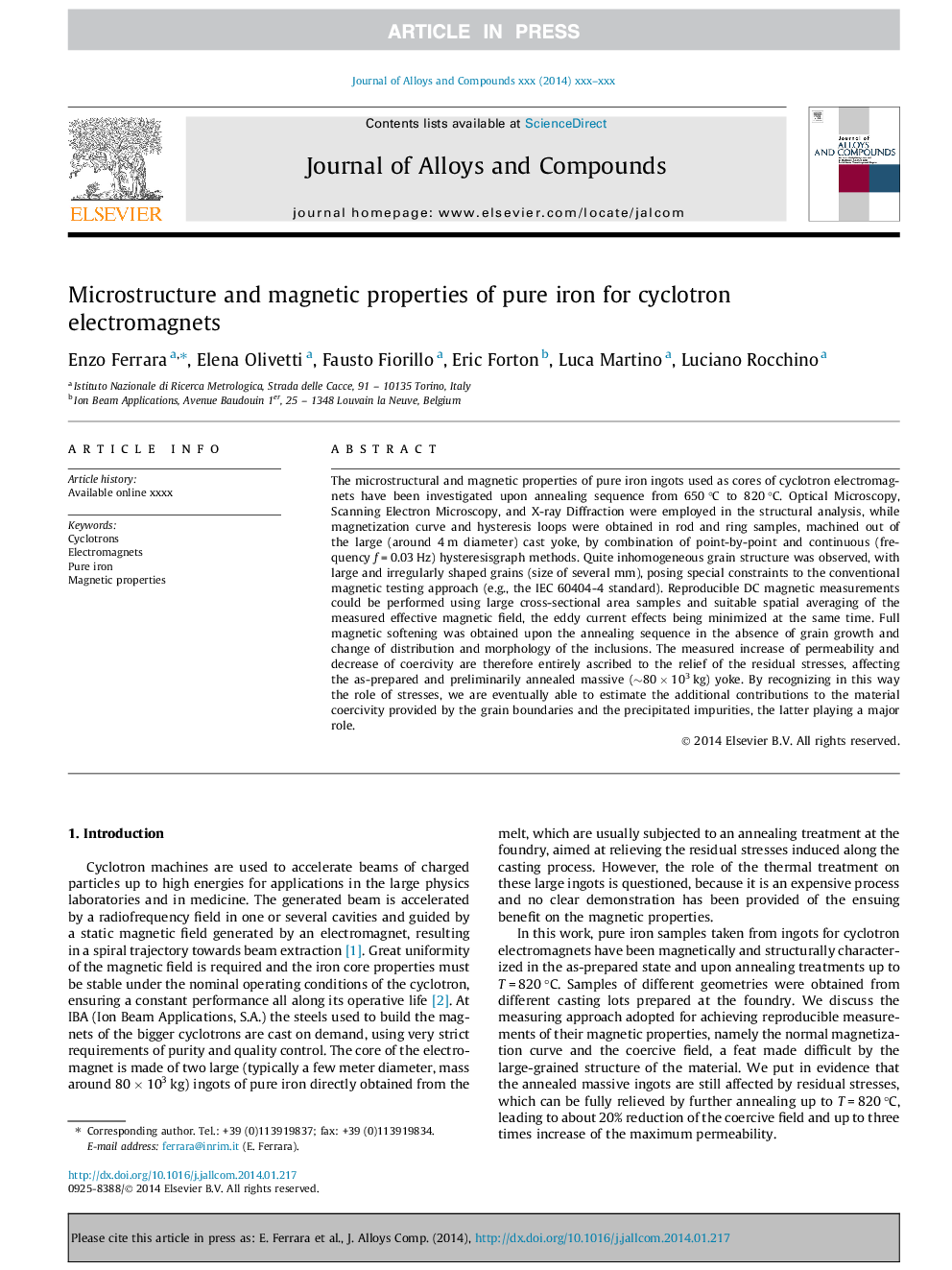| Article ID | Journal | Published Year | Pages | File Type |
|---|---|---|---|---|
| 10656502 | Journal of Alloys and Compounds | 2014 | 5 Pages |
Abstract
The microstructural and magnetic properties of pure iron ingots used as cores of cyclotron electromagnets have been investigated upon annealing sequence from 650 °C to 820 °C. Optical Microscopy, Scanning Electron Microscopy, and X-ray Diffraction were employed in the structural analysis, while magnetization curve and hysteresis loops were obtained in rod and ring samples, machined out of the large (around 4 m diameter) cast yoke, by combination of point-by-point and continuous (frequency f = 0.03 Hz) hysteresisgraph methods. Quite inhomogeneous grain structure was observed, with large and irregularly shaped grains (size of several mm), posing special constraints to the conventional magnetic testing approach (e.g., the IEC 60404-4 standard). Reproducible DC magnetic measurements could be performed using large cross-sectional area samples and suitable spatial averaging of the measured effective magnetic field, the eddy current effects being minimized at the same time. Full magnetic softening was obtained upon the annealing sequence in the absence of grain growth and change of distribution and morphology of the inclusions. The measured increase of permeability and decrease of coercivity are therefore entirely ascribed to the relief of the residual stresses, affecting the as-prepared and preliminarily annealed massive (â¼80 Ã 103 kg) yoke. By recognizing in this way the role of stresses, we are eventually able to estimate the additional contributions to the material coercivity provided by the grain boundaries and the precipitated impurities, the latter playing a major role.
Related Topics
Physical Sciences and Engineering
Materials Science
Metals and Alloys
Authors
Enzo Ferrara, Elena Olivetti, Fausto Fiorillo, Eric Forton, Luca Martino, Luciano Rocchino,
